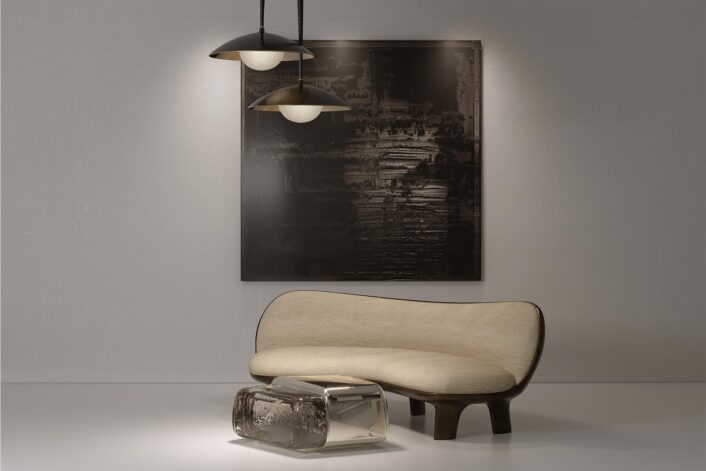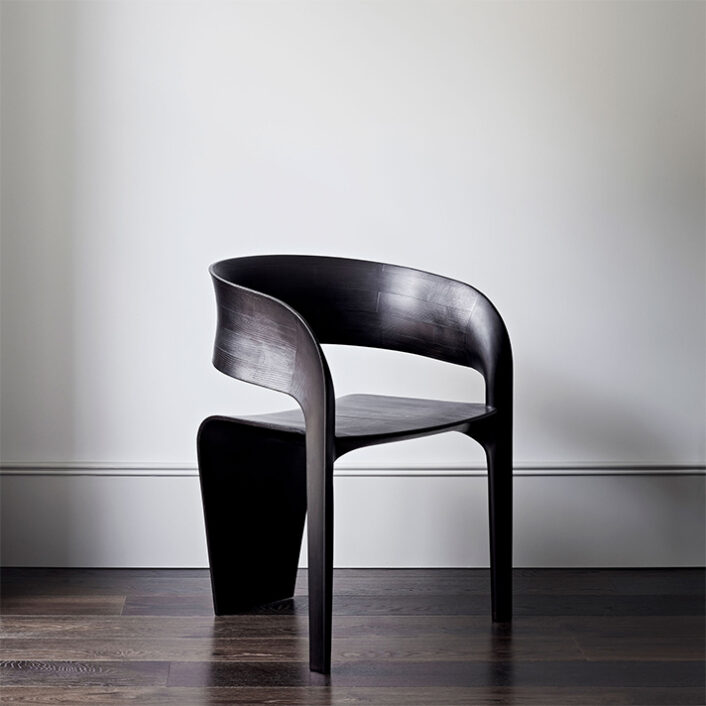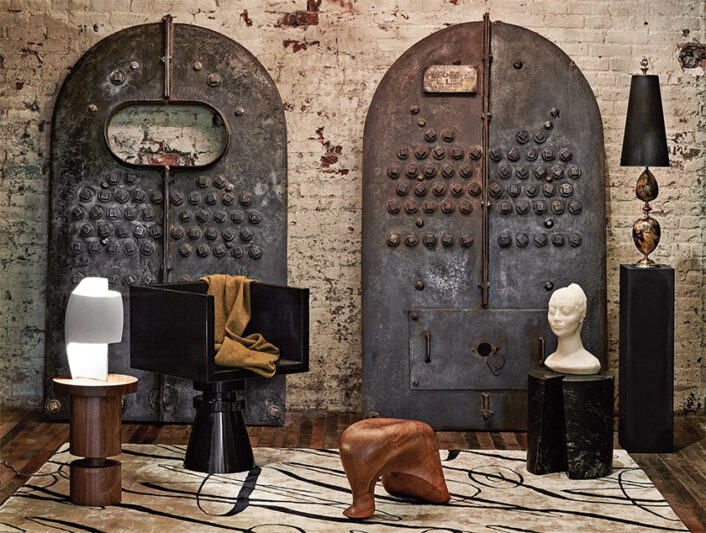Design
Raphael Navot
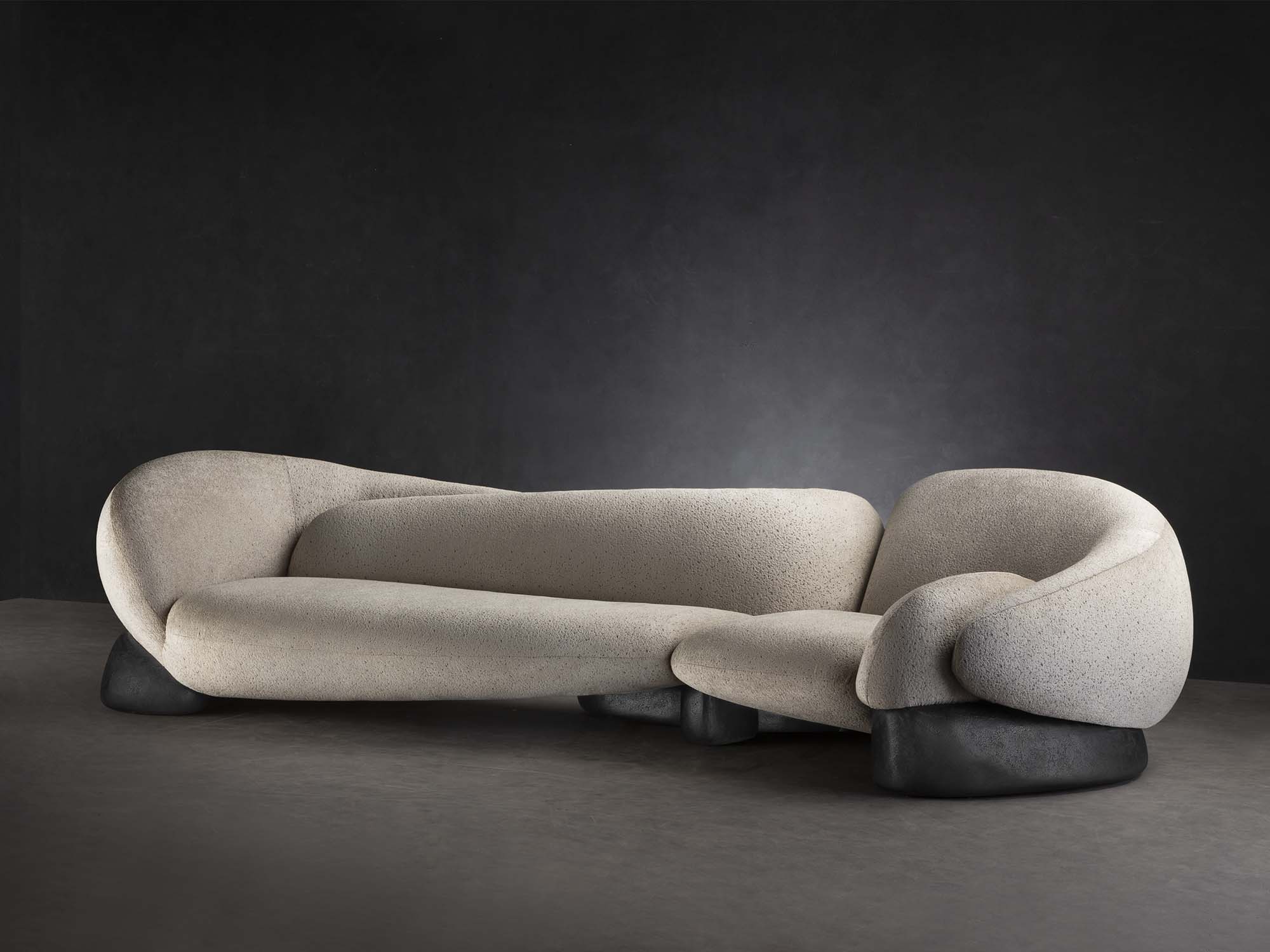
“Entwined,” 2022. Velvet, bronze, fiberglass, and 3D-milled foam. From an edition of 8.
Image courtesy of: Friedman Benda
Raphael Navot, the Paris- based designer, likes to consider “how we should situate ourselves between the old and new worlds.” Perhaps that ties to his first job in his native city of Jerusalem, that involved 3-D printing to model ancient temple landscapes for preservationists. At the time, 3-D printing was a new, cutting edge technology and Navot’s model was quite innovative.
Born in Jerusalem, the budding designer studied at Design Academy Eindhoven, receiving a Bachelor’s degree in Conceptual Design. Following graduation, Navot moved to Paris in order to learn about both the disciplines of design and interior architecture. He believed that there was no better location than Paris to get personal with some of the world’s most amazing structures.

Navot working on a piece.
Image courtesy of: Galerie Magazine, photograph courtesy of: Les Ateliers Courbet
Living in Paris allowed Navot the proximity to Europe’s best craftsmen and ateliers; that aspect has affected the designer’s work immensely. Navot’s handcrafted approach is present in each of his pieces; and his education’s focus on design thinking also impacts his designs tremendously.
Navot notes that he does not come from a technical background… he is more focused on the philosophy of design. His approach has differed since studying in Holland where they call design (courtesy of Par Excellency) “form giving.” In The Netherlands, he confirms that art and functional design are never a unit… however Navot hopes to change the fact that the two are separate.

Archetype I Travertine, displayed at Design Miami 2021.
Image courtesy of: Design Miami
Navot counts the materials he uses as inspiration. He tends to work with organic materials such as wood, stone, and iron… Navot loves feeling the history in the materials, and their long and direct link to nature. Referring to geology and biology also influences Navot’s pieces. Luckily, he is surrounded by amazing artisans that help him push the boundaries of what he can get “out of” his materials.
Navot’s “Topographic Memories” series came about from drawings that the designer made that were modeled using 3-D technology. The bronze casting for each of the lamps and the table were done along with the artisans at Ateliers Saint-Jacques. Even though technology was used, all of the texturing was done via hand. The travertine bases were burned and then immersed in water. The “quick shock” replicates what hundreds of years do in creating the look of coral. Navot says, “I am mimicking time by the process we use to create the effect.”
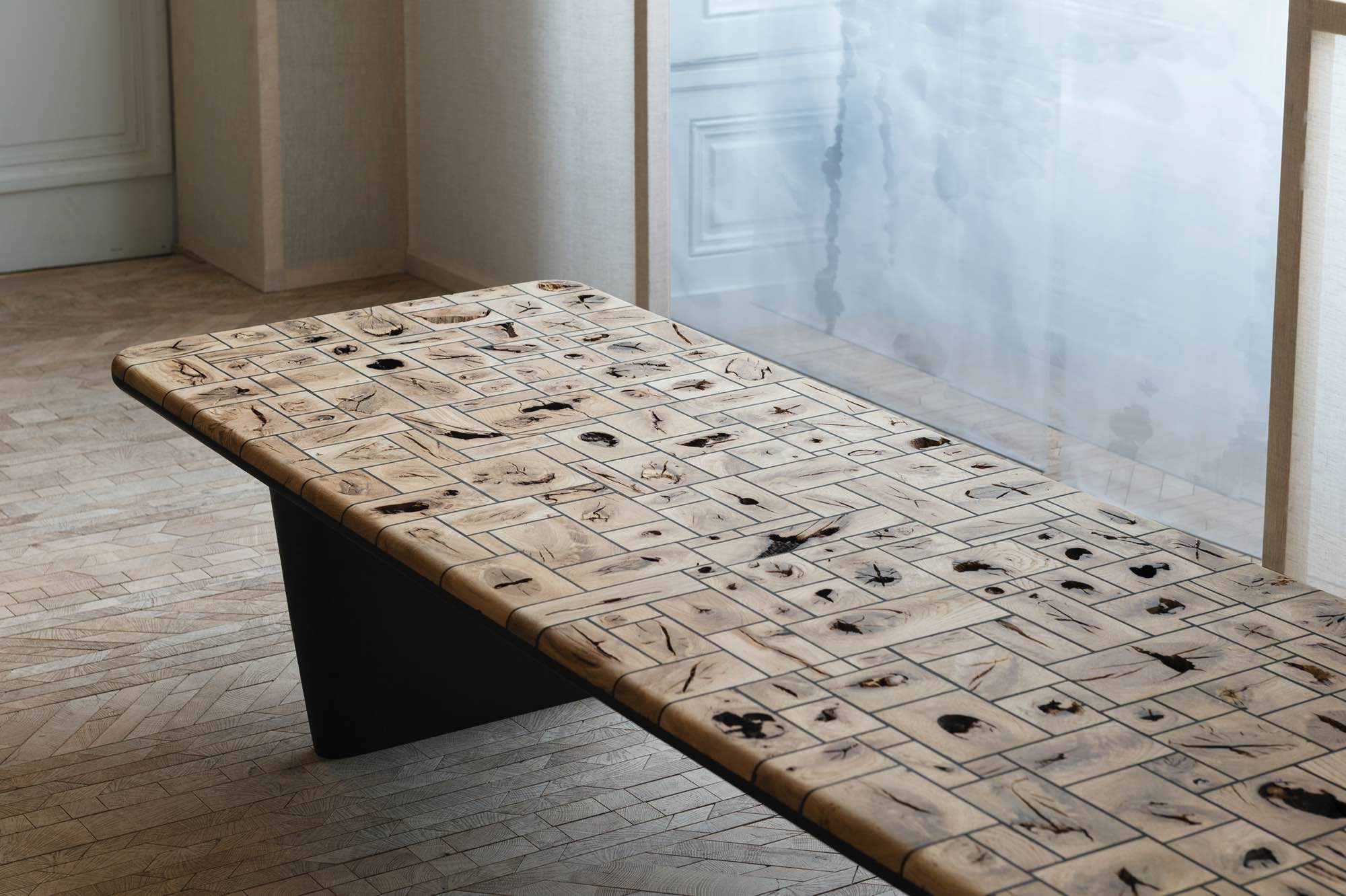
Wood Eyes Table, private edition from 2017.
Image courtesy of: Raphael Navot, photographed by Vincent Leroux (courtesy of Architectural Digest Interiors)
Telling a story through hieroglyphics, Navot imagined the “Eyes” bench using pieces of wood that were discarded by the wood industry. Navot loves the story that this wood is telling… the knots and scars within the wood represent a “hard-lived” life. Rather than seeing those inconsistencies as faults, those “damaged” pieces tell a narrative. As Navot says, “It is a language of celebrating the faults of the wood. Each “eye” is unique.”
In order to make his vision come true, Navot collaborated with a very specialized Belgian artisan. To attach the small pieces of wood to one another, the pair used rubber that is normally used on boats. This rubber is a natural material and thus, allows the wood to be flexible with heat variations. The design was a direct result of the material used… therein, the story.
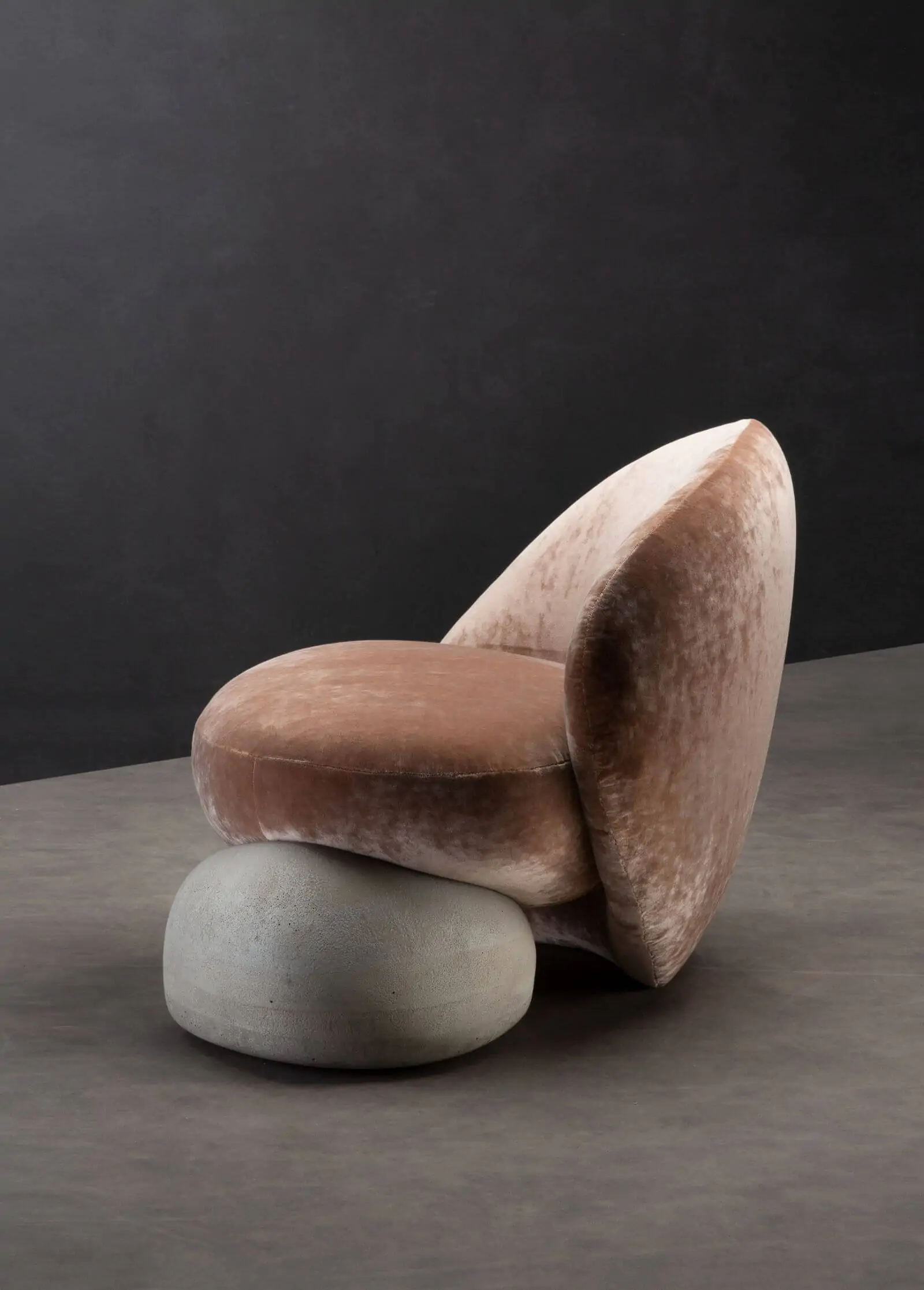
“Threefold,” 2022.
Image courtesy of: The Design Edit, photographed by: Daniel Kukla
Last year, Navot debuted pieces from his latest furniture collection at Friedman Benda’s New York City gallery. Navot and Marc Benda worked together for four years leading up to the designer’s first solo show. Titled “On the Same Subject,” the name references the freedom Navot felt throughout this project. He explains (courtesy of The Design Edit), “There were no boundaries. Working on a solo show, it was interesting for me to stop for a second and to choose to focus on one subject.”
With a client list that includes Roche Bobois, Loro Piana, and Hotel Dame des Arts in Paris, Navot has certainly hit the “big leagues.” Certainly, it is not surprising that his praises were sung and he was described as follows, “Raphael is a designer with a focus on the intimacy between objects and those living with them.” Agreed!
